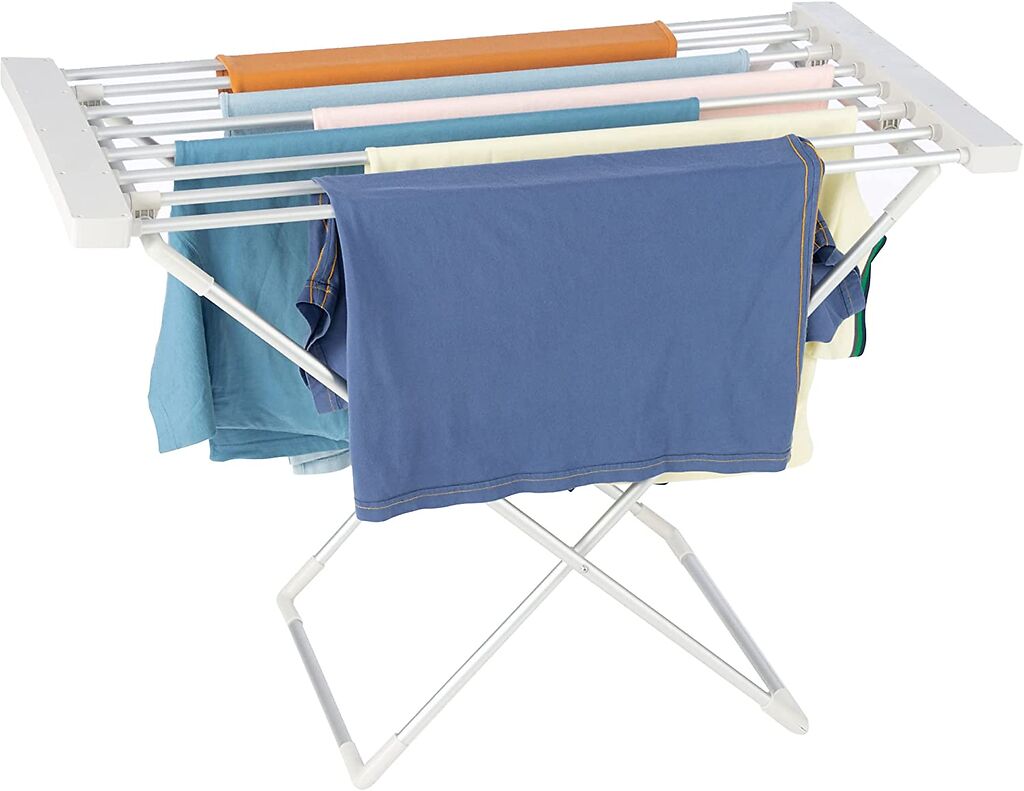
October 12th, 2022 by
How swapping to a heated clothes airer can help get you through the energy crisis
Because of the huge rise in energy costs, even those who didn’t really worry too much about saving money are having to consider how they can reduce energy consumption to keep bills from escalating. After heating and lighting, one of the biggest consumers of power at home is laundry. While nobody is really expecting people to return to hand washing clothes, there is an alternative to the tumble dryer for getting them dry, and that is a heated clothes airer.
How much does a tumble dryer cost to run?
The cost of energy seems to be changing every week but at the time of writing, the average cost of drying one load of washing is around £1.77 (this is compared to £1.46 in April this year and just £1.04 in November 2021). This is soon going to add up. Winter brings its own challenges. Not only does the weather prevent you from getting clothes dry outside, but you also tend to do more laundry as wet conditions create more dirty clothes and winter clothes tend to be thicker and bulkier and therefore require more drying. A family could easily generate the equivalent of a load of washing per day, if not more, so that’s a big cost (30 loads would be over £50).
How much does a heated airer cost to run?
A heated airer also uses energy so it’s not zero cost (you could, of course, use a non-heated airer though it would take longer to dry) but the cost is much lower. A 300w airer running for 3 hours (most items will be dry well within this time) costs around 27p. Plus, a large airer that could accommodate 2 loads of washing would still cost 27p to dry both of them when dried together. Therefore, 30 loads of washing could cost you just over £4 if you’re savvy. That’s a huge saving, plus reducing energy consumption is also a really positive environmental choice.
(most items will be dry well within this time) costs around 27p. Plus, a large airer that could accommodate 2 loads of washing would still cost 27p to dry both of them when dried together. Therefore, 30 loads of washing could cost you just over £4 if you’re savvy. That’s a huge saving, plus reducing energy consumption is also a really positive environmental choice.
How does it work?
Heated airers work by heating the rails that you hang your clothes on. The rails are made from conductive material, such as aluminium, that heats quickly but also cools slowly so they will continue to emit heat after the power is turned off. Many models augment the heating process through the use of a cover. This retains the heat and forces it to circulate around the clothes, maximising every unit of power used.
Other benefits
It’s not just about saving money, there are a number of other benefits too:
- Won’t shrink your clothes
An airer will help keep your clothes in great condition because they won’t shrink or damage them like a tumble dryer can. - Less ironing

Hanging clothes neatly over the rails minimises wrinkles so clothes often require little or even no ironing when dried this way. That doesn’t just save energy, it saves you time and effort too. - Flexible – put them anywhere
With an airer, you don’t have to dry clothes in the kitchen or utility room any more. If you would rather do your drying out of the way somewhere (for example, if you have a small kitchen) you can put it in a room of your choice. Tall airers make the most of vertical space so they can hold large volumes of washing while only having a small footprint – great for rooms where space is at a premium. - Silent drying
Tumble dryers can be noisy appliances, and this can be disruptive, especially if your kitchen is open plan and used for dining and living too. A heated airer makes no noise at all. - Folds away when not in use
Most airers fold flat so they can easily be stored away when not being used.
This all adds up to a really positive alternative and one that you will most likely continue to use even after energy costs stabilise and become more affordable.
Comments
Leave a reply
Your e-mail address will not be published. All fields are required



